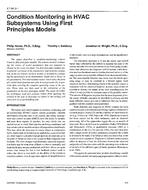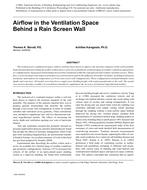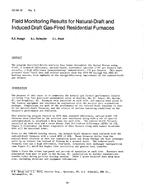In hot climates, it is very important to eliminate the penetration of solar radiation into buildings, easily allowed by glazing. In Brazil, due to its low latitudes, predominantly hot and humid climate and high solar radiation, the use of shading devices is desirable. This paper describes an experimental study about thermal performance of different fixed shading devices. The typology and materials were selected considering the elements used in modern architecture buildings of Brazil, between the 1930 and 1960 decades. The investigated devices were horizontal louvers, vertical fins and eggcrate typologies, made of concrete and wood, fixed, on north and west exposures. Results show the relation of orientation, typology and material of the devices in test. The most significant response was the horizontal concrete louver on north façade. In spite of the good insulation properties of wood, the concrete devices presented the best results.
Presented at Thermal Performance of Exterior Envelopes of Whole Buildings X – December 2007
Units: SI
Citation: Thermal Performance of Exterior Envelopes of Whole Buildings X
Product Details
- Published:
- 2008
- Number of Pages:
- 7
- File Size:
- 1 file , 2.8 MB
- Product Code(s):
- D-BldgsX84


